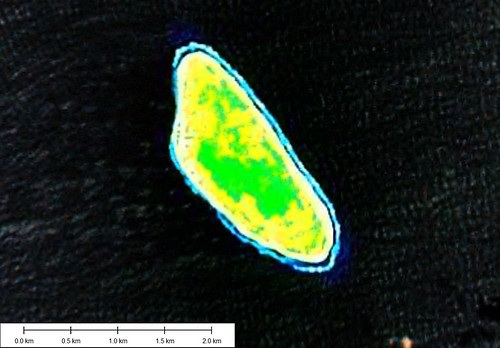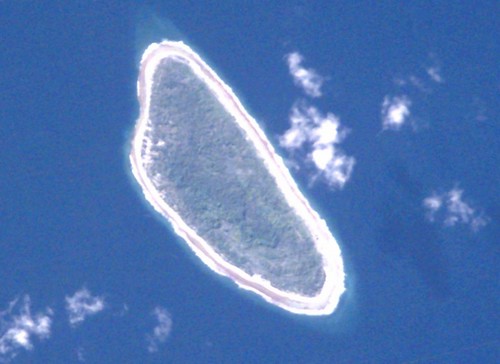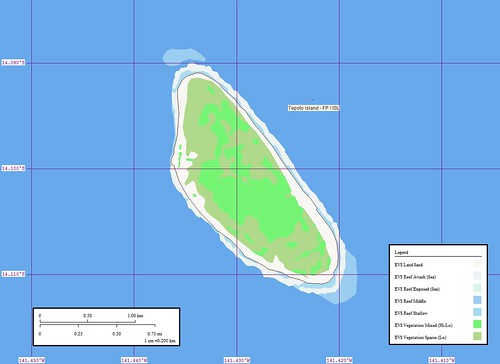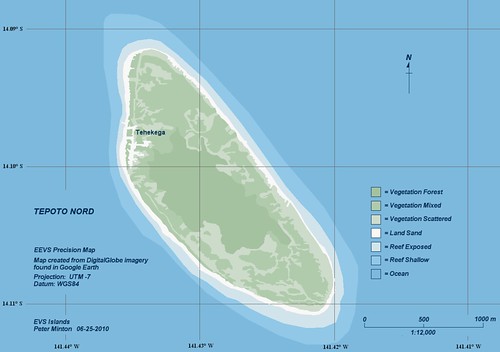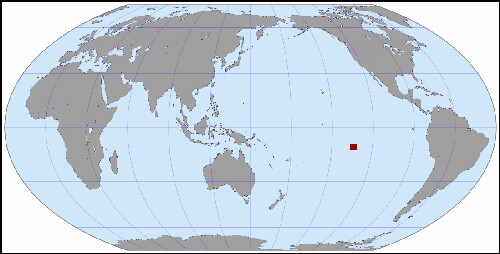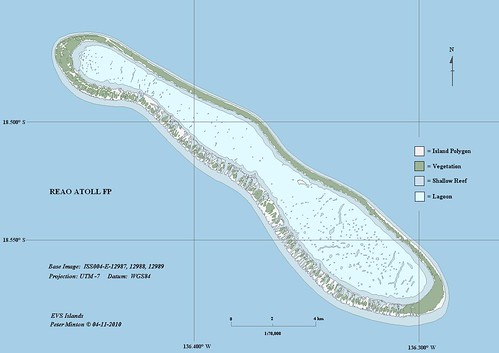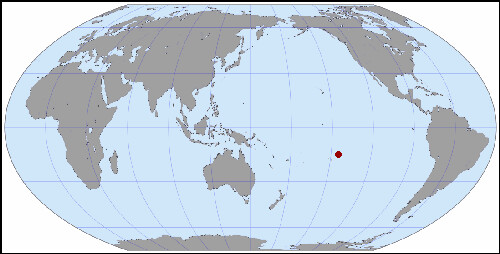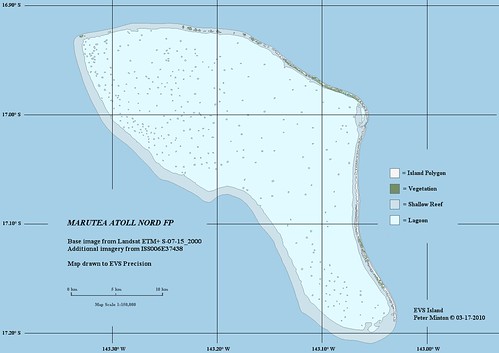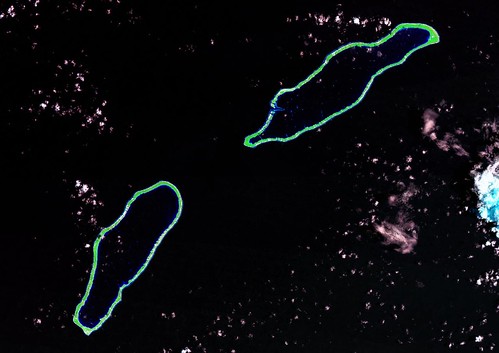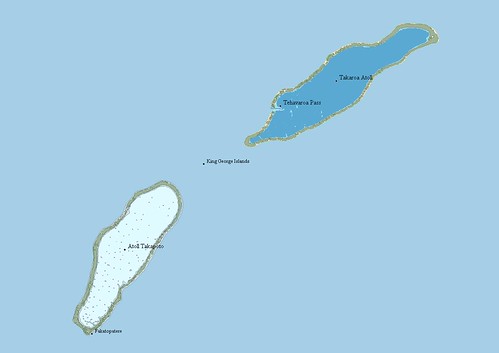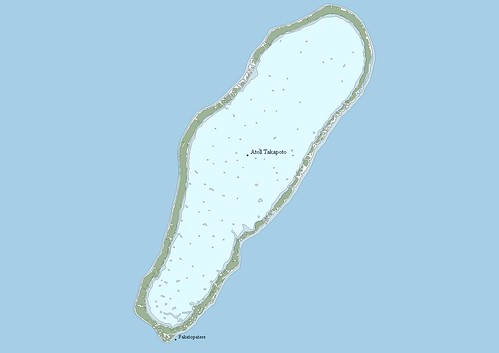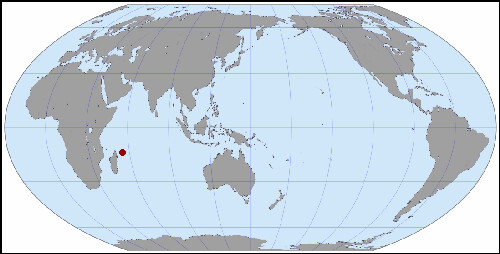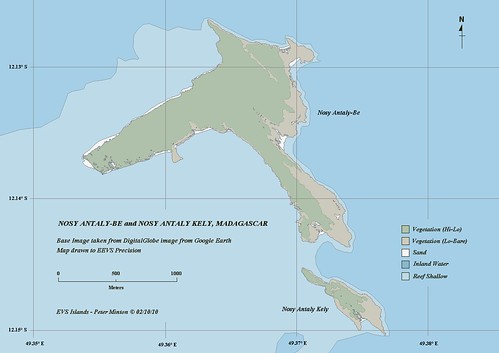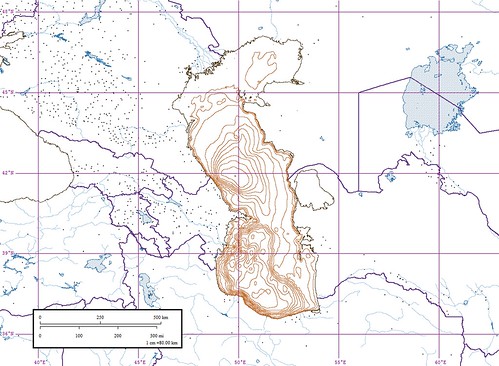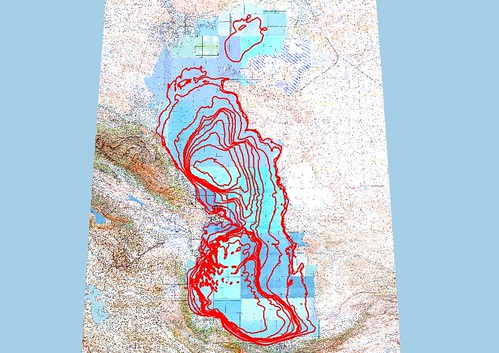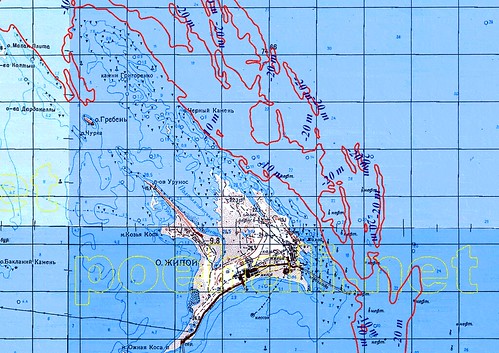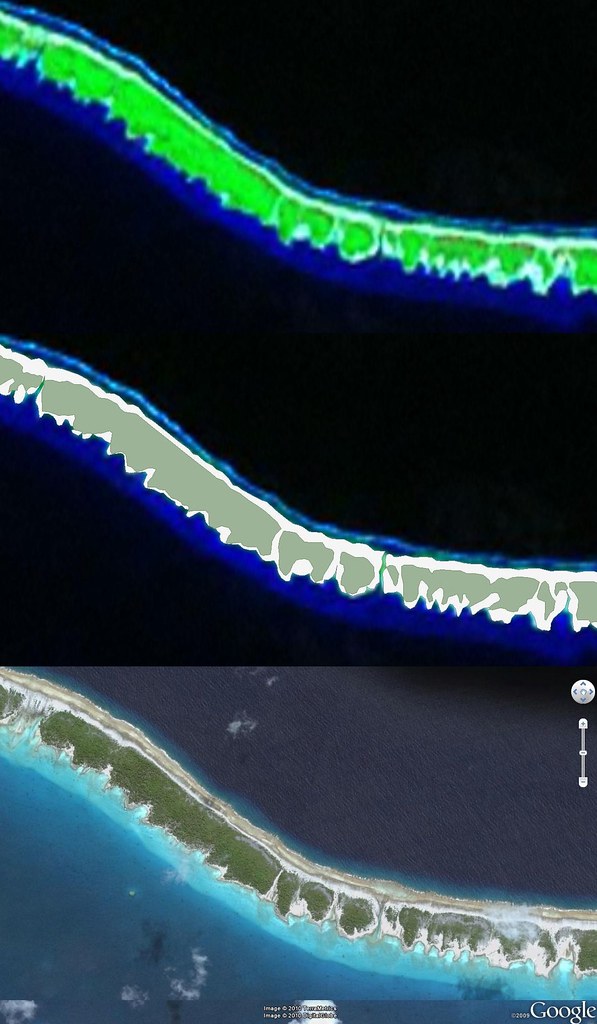
Faaite Atoll FP - Comparison - Landsat Image, EVS Precision Map, DigitalGlobe Image (1:12,500)
I keep telling all of you that I typically digitize off of Landsat imagery at approximately 1:12,500 scale. Checking out the above montage you will see a Landsat image of a portion of Faaite Atoll FP. Beneath it are two layers of information I digitized using Landsat as base imagery, vegetation and land. The final DigitalGlobe image from Google Earth is of the same stretch of atoll. The Landsat image has a green hue over all of the land and vegetation features. However, having digitized so many islands the sand or low vegetation, which I classify as land is identifiable. My Landsat derived vegetation layer is a decent approximation based on the vegetation shown on both Landsat and DigitalGlobe's hires imagery. The digitized land layer, I believe, is a strong match.
Why should one care at what scale one is able to digitize using Landsat as base imagery? Ask any photogrammetrist and they will tell you Landsat is reliable between 1:125,000 to 1:62,500. Each pixel covers a ground area of 14.5 meters by 14.5 meters. However, working at 1:12,500 does not render an image useless, but allows one to discern details in a rough but usable fashion. I can't make out individual trees, but I can identify stands of vegetation and most often the density of that vegetation. The most difficult feature on an atoll to reliably digitize is that portion of the reef which is awash depending on the time of day (high tide or low tide) and the amount of vegetation found growing on the reef. It is often difficult to determine whether the feature is above water land or below water shallow reef. Typically, if I'm uncertain I classify the feature as above water land.
Who knows, one day you might want to try your hand at island map making and you will want advise as to what scale you might expect to work at using Landsat as your base imagery. Digitizing at 1:12,500 should work just fine. Give it a try.
